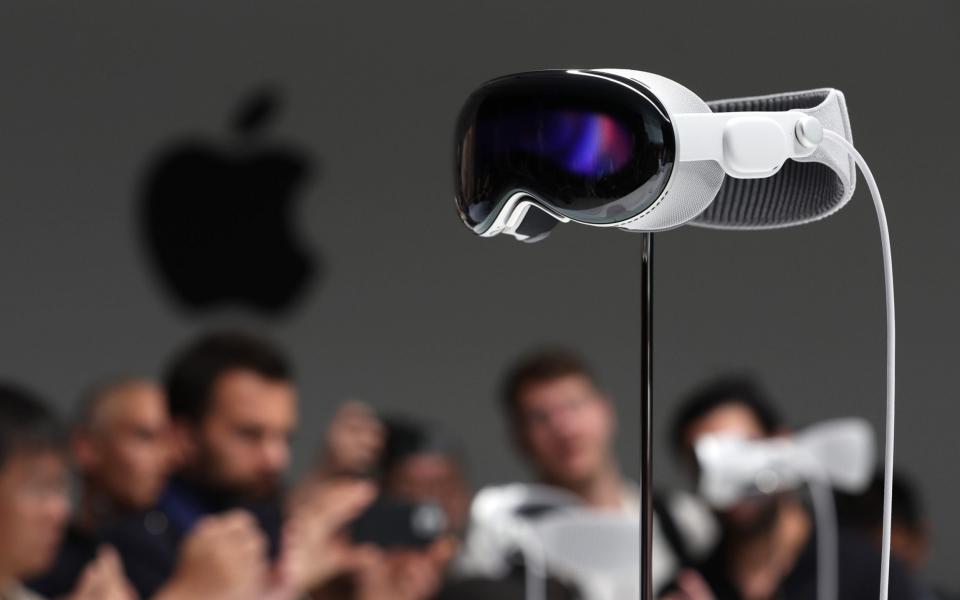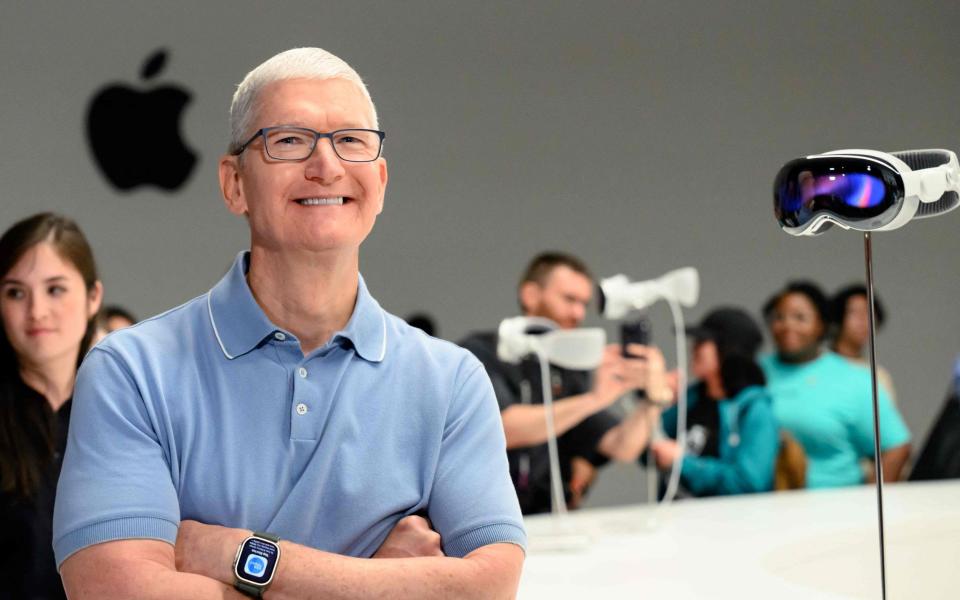The secret driving every tech innovation in history... porn

This week, Apple – the company that popularised the MP3 player with the iPod, smartphone with the iPhone and wireless headphones with AirPods – unveiled its latest new product. The tech firm is hoping that the Apple Vision Pro, a virtual-reality headset that can also show and augment the real world in front of you, will create yet another new category of electronics.
Someone wearing a headset could watch a 3D virtual reality movie or play a game, or else cook a meal with a recipe overlaid into their field of vision – perhaps even giving live advice based on how everything is going. On its website, Apple also talks about reliving “cherished” videos and the possibility of “life-sized” FaceTime calls. With opinions on virtual reality currently lukewarm, and a prohibitive $3,499 (£2,899) price tag, no one seems sure Apple’s new product is a guaranteed winner.
But, as with all its products, Apple can bank on a tranche of early adopters – most of them men under the age of 50 – who are devoted to the brand and pride themselves on being at the cutting edge of technology.
And, thanks to the potential of the device to both record video in 3D and show it to other users across the internet, it seems safe to say the company can also depend on another, not unrelated, group of customers: enthusiastic consumers of porn.
It won’t be the first time pornography has been a key driver of sales of new technology. Throughout history, the adult entertainment business has been an engine for tech innovations – from camcorders to videocams, paywalls to better broadband speeds. Nevertheless, it poses an awkward question for Apple: is pornography the key to the future of a company that prides itself on its family-friendly image?

The importance of porn to the success of new technologies was a phenomenon observed by the US commentator John Tierney in 1994, the early days of the world wide web. “Sex has had a peculiarly creative impact on communications,” Tierney wrote. “Sometimes the erotic has been a force driving technological innovation; virtually always, from Stone Age sculpture to computer bulletin boards, it has been one of the first uses for a new medium.”
The evidence certainly seems to support Tierney’s thesis. Cave paintings include representations of the naked human form. As soon as Gutenberg’s printing press was available outside of the church it was used to distribute explicit woodcuts.
The evidence in the modern era is even clearer. VHS famously won out over the technically superior Betamax in thanks part to being a more open format, which meant pornography studios didn’t need licensing or permission to produce adult VHS tapes.
But it is on the internet where the role of pornography as a driver in how technology evolves becomes indisputable. One of the first things people used the internet for was exchanging explicit messages or images. When broadband launched, the chance to load such content faster again lay behind its uptake.
It was pornography companies that solved the problem of secure online payment, having struggled to find ways to reliably charge users – spurring the rise of a much larger and mainstream ecommerce sector. The adult industry was ahead on user-generated content, monetisation (the adult network OnlyFans, for example, lets users subscribe to individual stars and see private content) and even the freemium model (some videos for free and then a paywall), which most news publications now use.

Whether it is a correlation that younger men drive new technology uptake and are the most regular users of pornography (or maybe they’re just the likeliest to admit it), or whether one drives the other, is almost irrelevant. The history of modern technological development teaches us that where porn leads, the rest of the economy will follow.
That might not bode well for virtual reality, and the online world of the “metaverse” that Apple boss Tim Cook and Meta/Facebook founder Mark Zuckerberg seek to bring forth. It was only last year that the idea of VR and the metaverse burst into the mainstream, becoming briefly inescapable before a rapid onset of disillusionment that perhaps this was not technology’s next big thing.
The adult industry’s big virtual reality hype had come a couple of years earlier – as headsets arrived that allowed users to feel like they were actually in the room where … events … were occurring, or even point-of-view films in which the viewer is intended to feel like a participant.
Both are said to have lacked in quality, and users apparently found it unnerving to watch lewd acts happening to them when they knew they were alone in a room with a lump of plastic strapped to their face. Coupled with the limited uptake of the headsets and the higher production cost of making such videos, much of the adult industry rapidly lost interest in VR.
The tech giants have problems, too. Most of the time when they develop a new technology, they can offer up an entirely innocent use case and absolve themselves of what it is really used for.

When incognito browsing – which lets users browse the internet without leaving history on the device – was developed, companies talked about browsing for birthday presents for family members. That was very much not its main use in reality. VR is a little more complex: the companies have much tighter control over who uses their devices, and what they allow. Can they create a deniable means for adult content to find its way onto the platform?
The answer seems to be that perhaps they can, says Charles Arthur, technology writer and author of Social Warming: How Social Media Polarises Us All – as the new Apple devices can record as well as view. “Given the price of Apple’s headset and who is likely to have the money and time – single young men – it’s highly likely the porn industry will latch onto the possibilities of 3D goggle recording rather quickly,” Arthur says.
The West is in an ongoing public debate about its decreasing fertility rate, and how many younger people are either waiting to start a family or not bothering at all. The most common explanations are increased education, access to contraception, and a much higher cost of living. But research shows increasing access to pornography among the young is giving them unrealistic and unhealthy approaches to sex and relationships. Is the ever-increasing availability of ever-more realistic adult content playing a part in our birth-rate crisis? Are people not bothering to find the real thing because the substitute is getting so good?
The American feminist critic Camille Paglia has a philosophical approach that seems to suggest there is not too much need to worry on that front. The reason pornography so often tracks development in technology, she has argued, is that it is always an inferior substitute for actual sex – and so people always want it to improve. It has indeed improved – from cave painting, to woodcut, to photographs, to video, and now to three dimensions.
If Paglia is right, we’ll always want more. Virtual reality might come closer to scratching an itch, but it’ll never actually do it. The fertility rate is probably safe for now, at least on this front.
Whether Apple’s bottom line and its image are also safe is a much, much more open question.

 Yahoo Finance
Yahoo Finance 